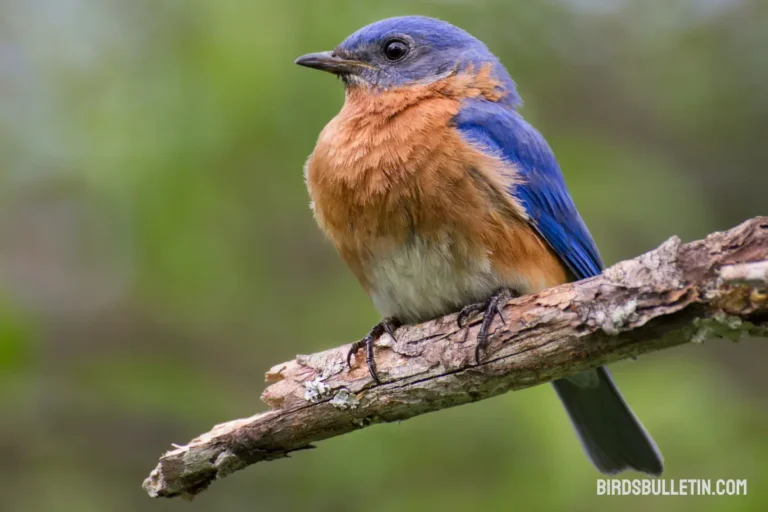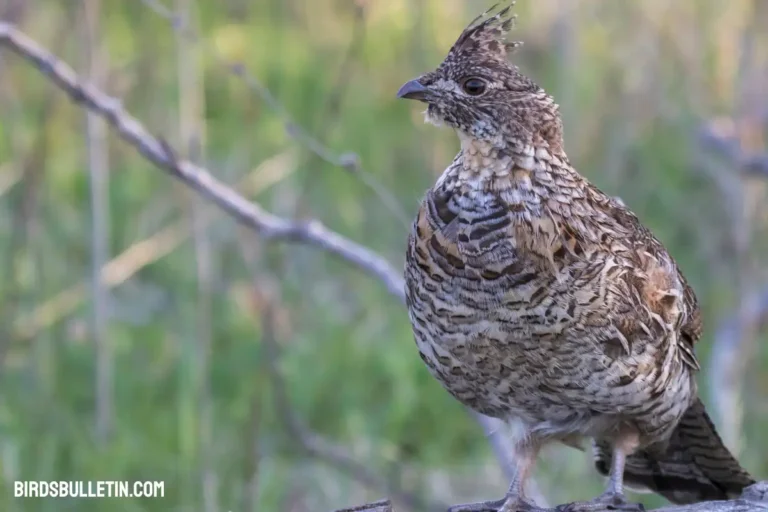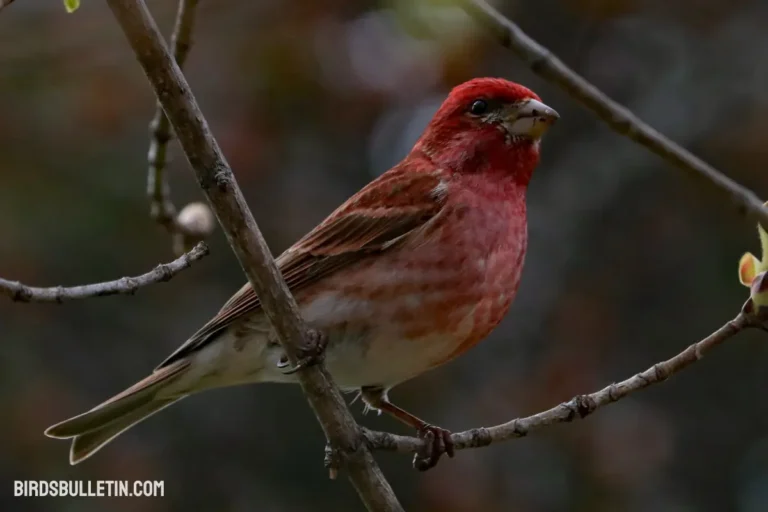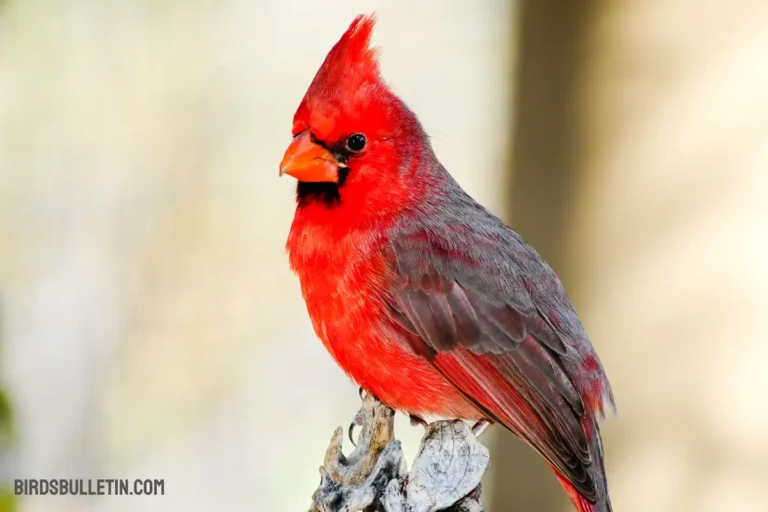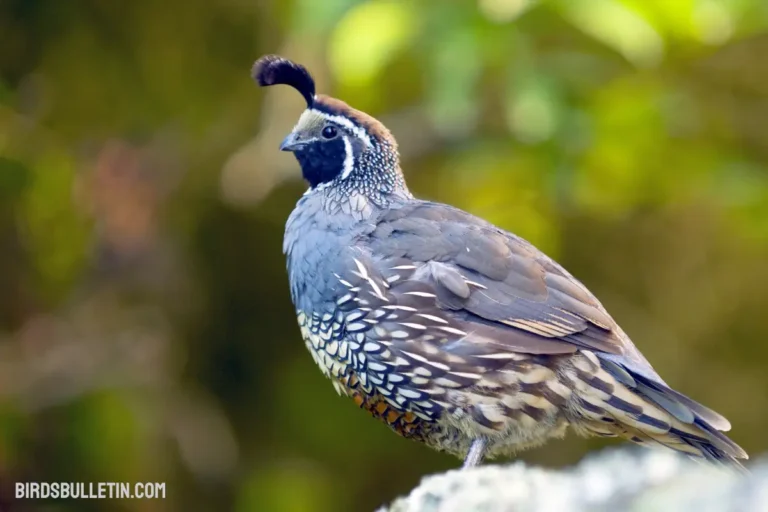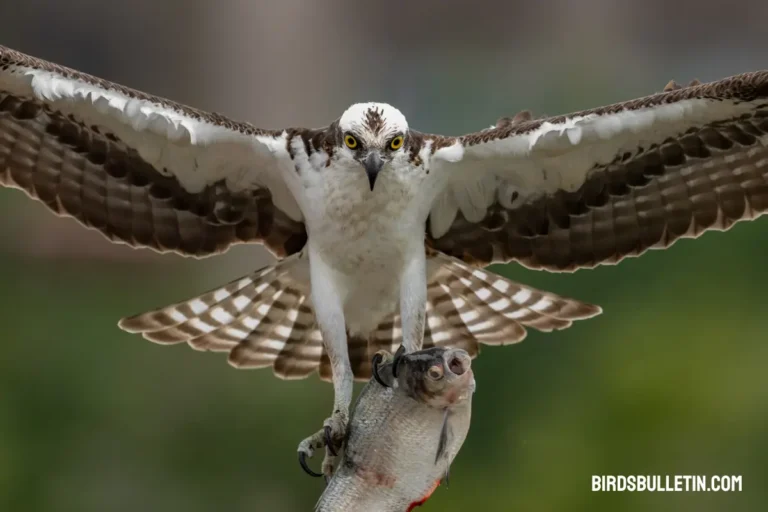Northern Bobwhite: Subspecies And More
Known for a whistled “bob-WHITE!” call defining southern landscapes, northern bobwhite quail holds an esteemed place in rural culture.
Valued gamebirds of open country, their presence graces pastures, pine savannas, native prairies and scrub responding well to land management benefiting their shrubby, grassland habitats.
Want to learn more about Birds Overview
Identification Step-by-Step
Identifying Northern Bobwhite Quail involves observing various physical characteristics and behaviors. Here’s a step-by-step guide to help you identify them:

Size and Shape
- Northern Bobwhite Quail are small birds, typically measuring around 9-10 inches (23-25 cm) in length.
- They have a round body with a short neck and tail.
Coloration
- The overall coloration is mottled brown with a white belly.
- Males often have a more distinct pattern with a white throat and a bold, black border under their throat.
Head and Facial Features
- The head is rounded, and the crown has a prominent dark stripe running from the beak to the back of the head.
- A white eyestripe or supercilium is usually present above the eye.
Bill: The bill is short and straight, suited for a diet primarily consisting of seeds and insects.
Wings: The wings have a distinctive pattern with black and white markings.
Tail: The tail is short and squared off.
Legs and Feet: The legs are short, and the feet are adapted for ground-dwelling.
Seasonal Changes: During the breeding season, males may display more vivid colors and engage in courtship behavior.
Bobwhite Quail Profile
| Feature | Details |
|---|---|
| Scientific Name | Colinus virginianus |
| Alternative Name | Northern Bobwhite |
| Color | Brown and white plumage |
| Size | About 9-10 inches (23-25 cm) in length |
| Wingspan | Approximately 14-16 inches (36-41 cm) |
| Weight | 6-7 ounces (170-200 grams) |
| Lifespan | On average 6 months, longevity 5 years |
| Breeding Season | Bobwhite quail peaks from May to August, spanning March to October. |
| Lay Eggs | Clutch size of 12-16 eggs, laid in nests on the ground |
| Diet and Prey | Seeds, insects, and small invertebrates |
| Threats and Predators | Hawks, snakes, mammals like raccoons and foxes |
| Locations | Native to North America, found in grasslands, agricultural areas, and open woodlands |
State Bird and Symbol
The northern bobwhite quail represents the state game bird of the 6 southeastern states where it resides. Its vocalizations and brushy habitat reflect an iconic part of the natural heritage there.
Subspecies
The Northern Bobwhite Quail comprises 20 recognized subspecies, categorized into four groups. The West bobwhite (C. v. insulanus), is now extinct. Here’s a list of the subspecies in taxonomic order within their respective groups:
Eastern Group
01. Colinus virginianus virginianus (Linnaeus, 1758) – Virginia bobwhite: Eastern North America, from Ontario south to northern Florida (includes former subspecies marilandicus and mexicanus)
02. Colinus virginianus floridanus (Coues, 1872) – Florida bobwhite: Peninsular Florida
03. Colinus virginianus insulanus (Howe, 1904) – Key West bobwhite: The Florida Keys (extinct)
04. Colinus virginianus cubanensis (GR Gray, 1846) – Cuban bobwhite: Cuba and Isla de la Juventud; introduced to Hispaniola, Puerto Rico, the Bahamas, and the Turks and Caicos Islands
05. Colinus virginianus taylori (Lincoln, 1915) – Plains bobwhite: South Dakota to northern Texas, western Missouri, and northwestern Arkansas
06. Colinus virginianus texanus (Lawrence, 1853) – Texas bobwhite: Southwestern Texas to northern Mexico
07. Colinus virginianus aridus (Lawrence, 1853) – Jaumave bobwhite: West-central Tamaulipas to southeastern San Luis Potosí
08. Colinus virginianus maculatus (Nelson, 1899) – Spot-bellied bobwhite: Central Tamaulipas to northern Veracruz and southeastern San Luis Potosí
Grayson’s Group
09. Colinus virginianus graysoni (Lawrence, 1867) – Grayson’s bobwhite: West-central Mexico
10. Colinus virginianus nigripectus (Nelson, 1897) – Puebla bobwhite: Eastern Mexico
Black-breasted Group
11. Colinus virginianus pectoralis (Gould, 1843) – Black-breasted bobwhite: Eastern slopes and mountains of central Veracruz
12. Colinus virginianus godmani (Nelson, 1897) – Godman’s bobwhite: Eastern slopes and mountains of central Veracruz
13. Colinus virginianus minor (Nelson, 1901) – Least bobwhite: Northeastern Chiapas and Tabasco
14. Colinus virginianus thayeri (Bangs and Peters, 1928) – Thayer’s bobwhite: Northeastern Oaxaca
Masked Group
15. Colinus virginianus ridgwayi (Brewster, 1885) – Masked bobwhite: North-central Sonora; reintroduced to Arizona
14. Colinus virginianus atriceps (Ogilvie-Grant, 1893) – Black-headed bobwhite: Interior of western Oaxaca
15. Colinus virginianus harrisoni (Orr and Webster, 1968) – Harrison’s bobwhite: Southwestern Oaxaca
16. Colinus virginianus coyoleos (Müller, PLS, 1776) – Coyoleos bobwhite: Pacific Coast of Oaxaca and Chiapas
17. Colinus virginianus salvini (Nelson, 1897) – Salvin’s bobwhite: Coastal and southern Chiapas
18. Colinus virginianus insignis (Nelson, 1897) – Guatemalan bobwhite: Guatemala (Rio Chiapas Valley) and southeastern Chiapas (includes former subspecies nelsoni)
Nesting and Habits
Nesting from April to September, bobwhite quail builds well-concealed shallow dirt nests generally at the base of native bunchgrasses, shrubs, or crop stubble. Hens lay 12-14 white eggs in each nest that hatch after 23 days.
Chicks forage on insects and seeds right away while both parents fiercely defend the brood. They may produce multiple clutches. Through fall and winter months they subsist more on seeds, waste grain, and legumes in communal flocks until breeding season returns.
Population
Even with a decline in population numbers, the estimated bobwhite quail population in the United States remains at approximately 4.8 million birds. Northern bobwhites remain common birds but suffer from severely reduced population densities, declining an estimated 85% in the last 50 years.
Habitat pressures and climate change impacts threaten sustainability in parts of their range without ongoing management efforts.
Migration
As non-migratory gamebirds, northern bobwhites occupy home ranges all year without seasonal movements. However, range shifts demonstrate ongoing adaption as warmer and more intensive land use degrades old habitats.
Conservation introduces wild birds from core southwestern populations to bolster struggling northeastern groups.
Behavior
Gregarious gamebirds and bobwhites spend most waking hours foraging in close-knit coveys of 10 to 30 birds. When alarmed, they may freeze in place or explode in whirring group flights before taking cover.
Coveys roost together in protective microclimates, then disperse socially each day to feed.
At night they reform coveys for security sleeping in a ring with heads facing outwards alert for predators. Spring heralds the dissolution of coveys as mated pairs isolate prior to nesting season.
Interhuman Connection
Northern bobwhites hold deep significance through:
- State game bird symbolizing land stewardship
- Subject for fine artwork to folk songs
- Food source when sustainably hunted
- Indicators of Habitat Management Success
- Tourism income supporting rural communities
Conservation Status
Once considered common farmland birds, northern bobwhite populations significantly declined over the last decades from agricultural intensification and scrub clearance.
Their considerable drops earn “Near Threatened” status concerns. Active habitat initiatives provide hope.
Legal Protections
Annual hunting limits aim for sustainable harvests where bobwhite populations allow. The U.S. Migratory Bird Act adds protections alongside state and provincial game bird regulations monitoring quail numbers to set hunting seasons and bag restrictions accordingly.
Frequently Asked Questions
01. How important is habitat management for quails?
As a short-lived species dependent on hiding cover and nest sites, active habitat management of grazing, burning, and brush clearance provides essential range upkeep allowing bobwhite numbers to flourish.
02. What is the biggest cause of quail decline?
Habitat loss and degradation pose the largest threats to reducing wild populations. Clean farming, urbanization, and closed canopy woodlands remove required mosaic brush and grasslands.
03. How does climate change affect bobwhites?
Hotter temperatures and increased storms handicap breeding success and food sources. Range shifts introduce new competitors from southern latitudes as well. Boosting habitat connectivity provides the best climate adaptation.
Final Word
The quintessential gamebird of small farm heydays, northern bobwhite quails symbolizes a balance of land stewardship benefiting wildlife and people.
Preventing further habitat clearance and maintaining shrubby openings allows bobwhite choruses to persist as icons of thriving sustainable countryside for generations to come.
References
- National Bobwhite Conservation Initiative. (2011). The National Bobwhite Conservation Initiative: A range-wide plan for recovering bobwhites. Profiles Publication.
- Brennan, L. A., Hernandez, F., & Williford, D. (2014). Northern Bobwhite (Colinus virginianus). In P. G. Rodewald (Ed.), The Birds of North America. Cornell Lab of Ornithology.
- Williams, C. K., Lutz, R. S., & Applegate, R. D. (2004). Winter survival and additive harvest in northern bobwhite coveys in Kansas. The Journal of Wildlife Management, 68(1), 94-100.


